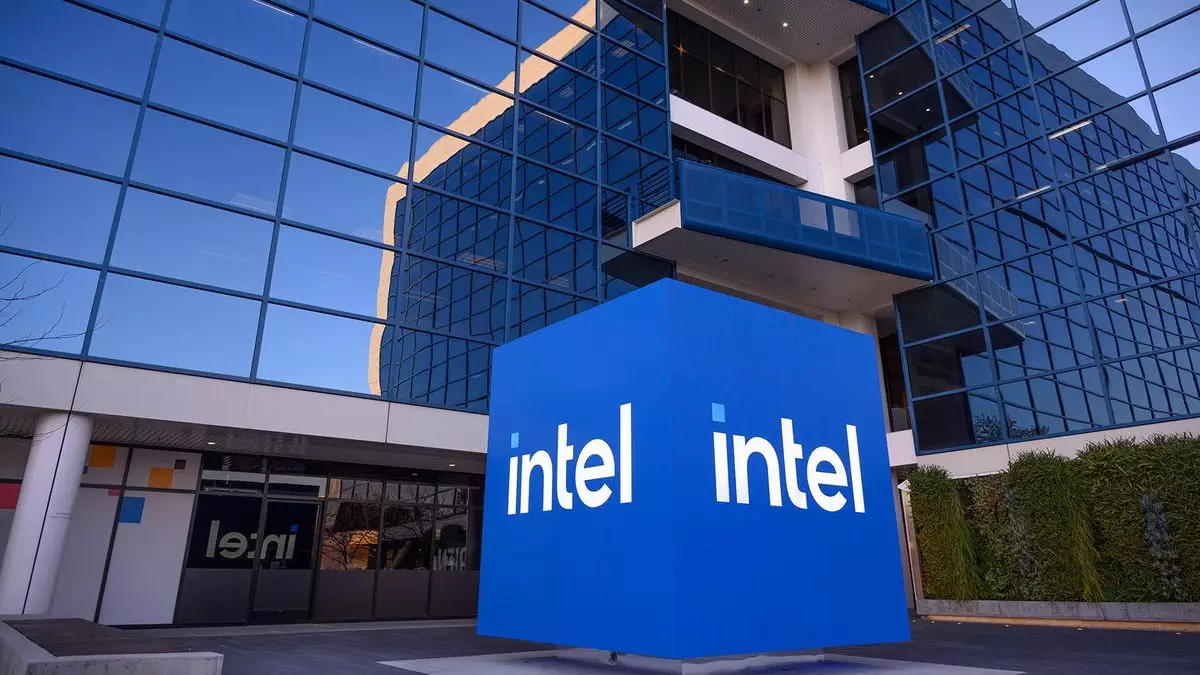Intel has long been considered a barometer for the semiconductor industry, an essential player that has profoundly influenced market dynamics for over two decades. However, in recent months, this bastion of technological innovation has faced an unprecedented series of financial challenges, leading to its removal from the Dow Jones Industrial Average. The shift has raised alarms among investors and industry observers, leading to speculation about the company’s future trajectory amid the market’s evolving landscape.
Over the past year, Intel has witnessed a staggering decline in its stock value, plummeting to approximately $23—halved from its worth a year prior. The company’s consistently disappointing financial results, characterized by a string of quarterly net income losses, have precipitated this downturn. Despite a slight uptick in revenue compared to 2023, the continuous financial bleed has left Intel with projections of losses exceeding $20 billion for the year. The striking figures reveal that Intel’s once-unassailable position is rapidly deteriorating, raising critical questions about the sustainability of its business model.
The departure from the Dow Jones Industrial Average, as announced by S&P Dow Jones, is indicative of a broader market recalibration. The press release clarified that the decision aimed to provide a more accurate representation of the semiconductor industry and the materials sector. This decision has critical implications, as it signals a departure from reliance on legacy companies toward more innovative and rapidly growing firms, such as Nvidia—the current darling of the AI revolution.
Intel’s struggles have translated into drastic operational maneuvers, including a significant reduction in its workforce, with 15% of employees laid off in a bid to mitigate financial losses. These layoffs reflect a grim reality for the company as it attempts to streamline operations amid mounting debts and a lack of competitive products. The new Arrow Lake processors, designed to captivate the gaming market, have not met expectations, further distancing the brand from competitors like AMD and Nvidia, which have taken the lead in both data center and AI markets.
The failure of Intel’s latest desktop processors to gain traction exemplifies a deeper issue— the company is now competing against agile competitors that have successfully adapted to current market demands. Meanwhile, Intel’s substantial investments in improving its chip manufacturing capabilities have yielded mixed results, with many high-priority projects facing delays or cancellations due to budget constraints. The company’s increasing dependence on foundries like TSMC to manufacture its latest chips highlights a critical vulnerability in its operational framework.
Despite its current challenges, it is essential to note that Intel’s story is far from over. This 56-year-old tech giant remains a vital contractor for the U.S. military, guaranteeing a steady stream of revenue through government contracts. Furthermore, the CHIPS and Science Act promises additional funding to bolster semiconductor production within the United States, potentially providing Intel with a much-needed lifeline as it grapples with losses.
Another silver lining is Intel’s continued dominance in the CPU client market, a segment where it still maintains a commanding market share. Such a foundation could be pivotal for the company’s resurgence if managed effectively. The key to achieving this lies in tightening overheads and focusing strategically on segments that promise the most significant return on investment.
As Intel struggles to regain its footing, the road ahead could be pivotal in defining its legacy. The landscape of semiconductors has evolved dramatically compared to 16 years ago, presenting both challenges and opportunities. Unlike previous recoveries, the current market demands a nuanced approach to innovation, particularly in graphics and AI processors. Although there may be skepticism about the viability of new gaming GPUs from Intel in the near future, the company must pivot from its past struggles and embrace emerging technologies that hold promise for a brighter, more profitable future.
While Intel faces steep challenges that threaten its legacy, a concerted effort to realign its operational strategies, coupled with external support through legislative backing, may offer avenues for recovery. The intersection of resilience and innovation could serve as the backbone for Intel’s road to redemption in the ever-evolving tech landscape.

